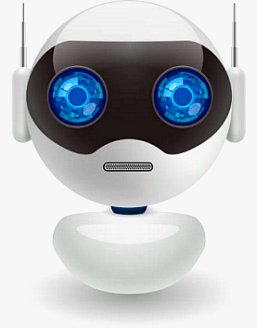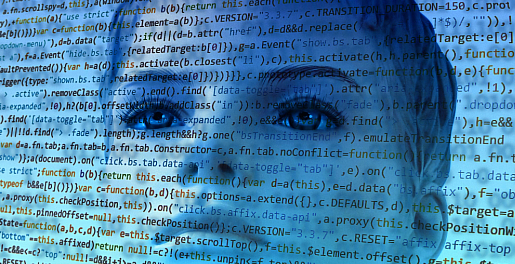Accredited InvestorsAltcoinAnatoli UnitskyAnti-Money Laundering (AML) In CryptoAPIArbitrageArtCoin TokenArticle DirectoryASICAuction Terminology GlossaryBasics of Stock Market InvestingBear MarketBest Crypto Payment Provider In the WorldBitcoinBlockchainBlockchain ConfirmationBlockchain Consensus MechanismBlockchain ForkBlockchain GlossaryBored Ape Yacht ClubBuild a Business That OutperformsBull MarketBuying SkyWay SharesByzantine Fault Tolerance (BFT) ExplainedCasascius CoinCentral Bank Digital Currency (CBDC)Centralized Crypto ExchangeCoinCoinsetCold WalletCollateralCommodity Futures Trading Commission (CFTC)Cross-Chain TechnologyCRUCrypto ExchangeCrypto GlossaryCrypto JokesCrypto Terms to KnowCrypto TickerCryptocurrencyCryptographyCryptojackingCryptounit BlockchainCryptounit GlossaryCryptounit ProgramdApp (Decentralized Application)Dead CoinDecentralized Exchange (DEX)Decentralized Finance (DeFi)Difference Between Bitcoin and EthereumDifferent Ways of Investing MoneyDigital CurrencyDistributed LedgerDo Your Own Research (DYOR)Dollar Cost Averaging (DCA)Dow Jones Industrial Average (DJIA)EncryptionERC-20ERC-721EthereumEvoScentFear Of Missing Out (FOMO)Fear, Uncertainty and Doubt (FUD)Fiat MoneyFNT Fintech CompanyGenesis BlockGlobal Unit PayGlossary of Banking TermsGlossary of Business TermsGlossary of Financial TermsHalvingHODLHot WalletHow Do I Start InvestingHow Rich is Satoshi Nakamoto?How to Create a BlockchainHow to Find Private InvestorsHow to Get Into FintechHow to Program Smart ContractsI Am Thrilled to Be a Part of This Global ProjectInitial Coin Offering (ICO)Initial Public Offering (IPO)Initial Token Offering (ITO)Innovation Basalt TechnologyInnovative Transportation TechnologiesInternational Bank Account Number (IBAN)Investing in Gold Mining StocksInvesting in Gold MiningJagerJoy of Missing Out (JOMO)Know Your Customer (KYC)LedgerLiquidity in CryptocurrencyMaker and Taker Fees in Crypto TradingMarket Capitalization (Market Cap)Meme CoinMetal Credit CardMetaMaskMillenials Now Have Access to Generational WealthMy Best Investment EverNew Digital EvolutionNFT GlossaryOff-Chain TransactionsOn-Chain TransactionsOpen Edition NFTPeer-to-Peer (P2P)Personal Loan GlossaryProbably the Best STO on the MarketProof of Stake (PoS)Real Estate Glossary of TermsReal Estate Investing GlossaryRebase TokenSecurities and Exchange Commission (SEC)Security Token ExchangesSecurity Token Offering (STO)Soulbound Decentralized Identities for Security TokensSoulbound ID Launch by Stobox Proves a SuccessSoulbound TokensStoboxStock Market GlossaryTestimonialsTether Platform and Token (USDT)UnitEx ExchangeUnitsky String TechnologiesUNTBUSDUValidatorWe Started Investing When We Were 25What are Blue Chip NFT?What are Blue Chip Stocks?What are Crypto Assets?What are Crypto Smart Contracts?What are CryptoPunks NFT?What are Digital Assets?What are Digital Collectibles?What are Gas Fees?What are Gas Wars?What are Hashmasks?What are Non Fungible Tokens?What are Non-Sufficient Funds (NSF)?What are Soulbound Tokens (SBT)?What are Stablecoins in Crypto?What are Transactions Per Second (TPS)?What are Utility NFTs?What are Utility Tokens?What Does Burning Crypto Mean?What Does Diamond Hands Mean?What Does Paper Hands Mean?What Does To The Moon Mean?What Does WAGMI Mean?What Happened to Satoshi Nakamoto?What is a 51% Attack?What is a Baby Boomer?What is a Backlink?What is a Banner?What is a Barcode?What is a Bid-Ask Spread in Crypto?What is a Block in Blockchain?What is a Block Reward?What is a Blockchain Address?What is a Blockchain Node?What is a Blockchain Oracle?What is a Blog?What is a Bond?What is a Bot?What is a Broker?What is a Business Accelerator?What is a Cash Cow?What is a Commercial Bank?What is a Commodity?What is a Con?What is a Credit?What is a Credit Limit?What is a Credit Rating?What is a Crypto Airdrop?What is a Crypto Bridge?What is a Crypto Scam?What is a Crypto Token?What is a Crypto Wallet?What is a Crypto Whale?What is a Crypto Winter?What is a Cryptocurrency Public Ledger?What is a Cryptocurrency Roadmap?What is a DAO?What is a Dark Pool?What is a Day Trader?What is a Dead Cat Bounce?What is a Default?What is a Derivative?What is a Digital Credit Card?What is a Fiscal Quarter?What is a Fungible Token?What is a Governance Token?What is a Grace Period?What is a Hard Fork?What is a Hot Wallet?What is a Hybrid Blockchain?What is a Hybrid PoW/PoS?What is a Joint Account?What is a Market Cap?What is a Merkle Tree in Blockchain?What is a Mining Farm?What is a Nonce? What is a PFP NFT?What is a POS System?What is a Prepaid Card?What is a Private Blockchain?What is a Private Key?What is a Public Blockchain?What is a Public Key?What is a Reserve Currency?What is a Ring Signature?What is a Routing Number?What is a Rug Pull in Crypto?What is a Safe Deposit Box?What is a Satoshi?What is a Security Token?What is a Seed Phrase?What is a Shitcoin?What is a Sidechain?What is a Soft Fork?What is a Spot Market?What is a State Bank?What is a SWIFT Code?What is a Tax Identification Number (TIN)?What is a Time Deposit?What is a Transaction Account?What is a Variable Interest Rate?What is a Virtual Assistant (VA)?What is a Virtual Card?What is a Virtual Currency?What is a Visa Card?What is a Whitelist in Crypto?What is a Whitepaper?What is Accounts Payable (AP)?What is AMA in Crypto?What is Amortization?What is an Accrual?What is an ACH Transfer?What is an Actuary?What is an Addendum?What is an Algorithm?What is an Angel Investor?What is an Annuity?What is an Asset?What is an ATM?What is an Atomic Swap?What is an Audit?What is an Avatar?What is an EIN?What is an Embargo?What is an Entrepreneur?What is an IDO (Initial Dex Offering)?What is an Interest Rate?What is an Internet cookie?What is an Investment Bank?What is an NFT Drop?What is an NFT Floor Price?What is an Ommer Block?What is an Orphan Block?What is an Outstanding Check?What is an Overdraft?What is Artificial Intelligence (AI)?What is B2B (Business-to-Business)?What is B2G (Business-to-Government)?What is Bartering?What is Bitcoin Dominance?What is Bitcoin Pizza Day?What is Blockchain Immutability?What is Blockchain Used For?What is BRICS?What is Business-to-Consumer (B2C)?What is C2C (Customer to Customer)?What is Capitalism?What is Catfishing?What is CFD Trading?What is Check Kiting?What is Cloud Mining?What is Communism?What is Content Marketing?What is Decentralization in Blockchain?What is DeFi in Crypto?What is Delisting?What is Depreciation?What is Digital Marketing?What is Diversification?What is Double Spending?What is Dumb Money?What is Dumping?What is Earnings Per Share (EPS)?What is Economics?What is Email Marketing?What is Equity?What is Etherscan?What is Fintech?What is Foreign currency?What is Forex?What is Fundamental Analysis (FA)?What is GameFi?What is Generative Art NFT?What is Gwei?What is Hard Currency?What is Hash Rate?What is Hashing in Blockchain?What is Inflation?What is Initial Game Offering (IGO)?What is Interest?What is Interest Income?What is Mainnet?What is Mastercard?What is Metaverse in Crypto?What is Mining in Cryptocurrency?What is Minting NFT?What is Mobile Banking?What is Money Laundering?What is NFT Alpha?What is NFT Metadata?What is NFT Rarity?What is NGMI Meaning?What is Nominal Interest Rate?What is Online Banking?What is Open-End Credit?What is OpenSea NFT Marketplace?What is Personal Identification Number (PIN)?What is Play-to-Earn?What is Polygon?What is Proof of Authority (PoA)?What is Proof of Work (PoW)?What is Public Key Cryptography?What is Pump and Dump?What is Quantum Computing?What is Refinancing?What is Retail Banking?What is Ripple?What is Sharding?What is Slippage in Crypto?What is Smart Money?What is Solvency?What is Soulbound ID?What is SSL?What is Staking in Cryptocurrency?What is Technical Analysis (TA)?What is Testnet?What is the Ask Price?What is the Better Business Bureau (BBB)?What is the Bid Price?What is the Dark Web?What is the InterPlanetary File System (IPFS)?What is the Gold Standard?What is the Lightning Network?What is the Prime Rate?What is the Sandbox?What is the Secondary Market?What is the World Bank?What is Tier 1 Capital?What is Tokenomics?What is TRC-20?What is Universal Banking?What is Unspent Transaction Output (UTXO)?What is Usury?What is Volatility in Crypto?What is Wash Trading?What is Web3?What is Whisper?What is XRP?What is Zero-Knowledge Proof (ZKP)?Who is Beeple?Who is Satoshi Nakamoto?Who is Vitalik Buterin?Why Tokenization is a Safe HavenWhy You Should Try Your Hand at Trading
What is a Bot?
- Home
- Glossary of Business Terms
- What is a Bot?
Bots are now a prevalent feature of the contemporary online environment, performing a variety of autonomous tasks, frequently on behalf of organizations.

While navigating the internet, individuals are likely to have come across bots, such as those utilized for customer service purposes.
What is a Bot?
A bot, short for robot, is a software program that is designed to perform specific tasks automatically. Bots are typically programmed to perform repetitive tasks faster and more efficiently than a human user could. They can operate autonomously, without the need for human intervention, and they can be used to carry out a wide range of functions.
How do Bots Work?
Bots operate by following pre-programmed instructions that are based on a set of rules or algorithms. These rules govern how the bot behaves and what actions it takes. Bots can access and interact with websites, social media platforms, and other online applications, just like a human user would.
Types of Bots
There are several types of bots, each designed to perform specific functions. Some of the most common types of bots include:
- Web Crawlers - Web crawlers, also known as spiders or bots, are programs that scan websites and index their content for search engines. These bots follow links on websites and collect data, which is then used by search engines to provide relevant search results to users.
- Chatbots - Chatbots are software programs that simulate human conversation. They are often used for customer service or support, and they can help users navigate through complex systems or answer frequently asked questions.
- Social Bots - Social bots are programs that operate on social media platforms. They can be used to automate tasks such as posting, commenting, liking, and following. Social bots can be either beneficial or harmful, depending on their intended use.
- Malicious Bots - Malicious bots are programs that are designed to carry out harmful activities. These bots can be used for activities such as credential stuffing attacks, scraping content, or spreading spam.
Applications of Bots
Bots are becoming increasingly prevalent in various industries, and they can be used for a wide range of applications. Here are some examples of how bots are used in different sectors:
- E-commerce - In the e-commerce industry, bots are used for various functions, such as processing orders, tracking shipments, and managing inventory. They can also be used for customer service and support, helping users with their queries or issues.
- Healthcare - Bots are also used in the healthcare sector to perform various functions, such as appointment scheduling, prescription refills, and patient monitoring. They can help patients access healthcare services more efficiently and reduce the burden on healthcare providers.
- Finance - In the finance industry, bots are used for various functions such as fraud detection, account management, and customer service. They can help financial institutions reduce the risk of fraud and improve their customer service experience.
- Gaming - Bots are also used in the gaming industry for various functions, such as NPC (non-playable character) behavior, game testing, and player support. They can help game developers improve the gaming experience and provide better support to players.
Pros and Cons of Bots
Like any other technology, bots have their pros and cons. Here are some of the advantages and disadvantages of bots:
Pros:
- Efficiency: Bots can perform tasks faster and more efficiently than humans, reducing the time and effort required for repetitive tasks.
- Cost-effective: Bots can perform tasks without the need for human intervention, reducing labor costs.
- Accuracy: Bots can perform tasks with high precision and accuracy, reducing the risk of errors.
- Availability: Bots can operate 24/7 without the need for breaks or time off, ensuring that tasks are completed without interruption.
- Scalability: Bots can be easily scaled up or down depending on the workload, allowing organizations to manage their resources more efficiently.
Cons:
- Lack of personal touch: Bots lack the personal touch and empathy that human interaction provides, which can be a disadvantage in customer service or support.
- Limited intelligence: Bots are only as intelligent as the algorithms they are based on, and they lack the creativity and problem-solving abilities of humans.
- Security risks: Malicious bots can pose a security risk by carrying out activities such as credential stuffing attacks or spreading spam.
- Ethical concerns: The use of bots raises ethical concerns, such as the potential for job loss or the impact on privacy.
The Bottom Line
Bots are becoming an increasingly prevalent technology in various industries, providing efficiency and cost savings for organizations. From web crawlers to chatbots, social bots, and malicious bots, there are many types of bots that can be used for different functions. While bots have their advantages, such as efficiency and scalability, they also have their disadvantages, such as the lack of personal touch and security risks. As technology continues to evolve, it is essential to consider the potential impact of bots on our lives and society and to address any ethical concerns that arise.
Related Articles

API
Traders can use these APIs to feed market data to trading bots, allowing them to execute trades on their behalf (based on predefined instructions).

Arbitrage Trading
However, it is important to remember that trading bots operate on a variety of platforms, and many of them were created specifically to profit on arbitrage opportunities.

What is Artificial Intelligence (AI)?
These AI include advanced chatbots that could fool a person into believing they are human, passing the Turing Test.
- Home
- Glossary of Business Terms
- What is a Bot?